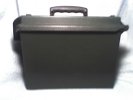|
You're right that the BBHN team isn't going to do a port for unsupported hardware. Lots of people have asked for a port to platform X or Y, and there usually hasn't been anyone with the time to create a new package for that software. We keep telling people they can roll their own, but not many have done it.
Kudos, by the way, to the folks who did the Ubiquiti work. Looks like a very well done package. It's important to realize that it's possible to "roll your own" install on other hardware and make a mesh node that will connect to a BBHN network. Several people have done this, and it's good to know what's been made to work, and maybe get some links or contacts for info or for help. For instance, I THINK that an Android device could function as a mesh node, but it's difficult to get an Android device to go into ad hoc mode. If someone had figured out the magic trick to get an android into ad hoc mode, it would save the next person who tries it a lot of work. I also THINK some people have connected windows PC's to early versions of HSMM-MESH. It would be great to figure out how to make a Windows PC connect wirelessly to the mesh. Getting some info on how it was done would be useful.
Let's not kid ourselves. This is a great project, but there's not a lot of hand holding even if you do use the official packages on the supported hardware. It's important to realize that BBHN isn't as simple as just buying a 2 meter rig, attaching an antenna and becoming an appliance operator. BBHN isn't for appliance operators unless you have a local guru who can help you do the difficult bits. Making other hardware work with BBHN is way, way above the appliance operator class. And way above my pay grade, that's for sure. Porting the full BBHN package into a clean, easy to install package others can use is way, way above that.
Tell me about your VMWare install. What were the guest and host OS's? Was this VMWare running on an Intel PC? I haven't used VMWare, but I'm familiar with VirtualBox. I wonder if you could use VirtualBox or VMWare to run a linux client on a Windows machine and allow you to connect a Windows laptop to a BBHN network. At first blush, I'd think that you'd need to run a lot of software on the Windows side, but maybe not. If you just put the Windows interface into ad hoc mode, and made it connect, maybe the OLSR and whatever else you need could run in a VM. Way above my pay grade again, particularly in my post-lunch stupor.
[KG6JEI 2014-03-28- 06:33:46]: Of note: if you install a port from somewhere else do not expect the BBHN core team to be able to support it. We have no control over outside productions. If you want a guaranteed to work deployment you need to use an official build. If it didn't come from BBHN all support queries would need to be sent to the port creator as they are the ones whom would need to work on the issue.
All *nix like operating systems (Linux,BSD,Unix and probably even MAC) should work if your willign to put in the time to do it manually.
I could make this run on practically any Linux type router that allows install access(Especially if it runs OpenWRT) It the packaging of the port that takes the effort.
In my case I am running on a Pi (custom install -- not packaged), Ubiquiti (3 models across 2 bands and 4 units), Linksys, 3x vm's inside of VMWARE, and thats all i bothered to install it on for now.
|
